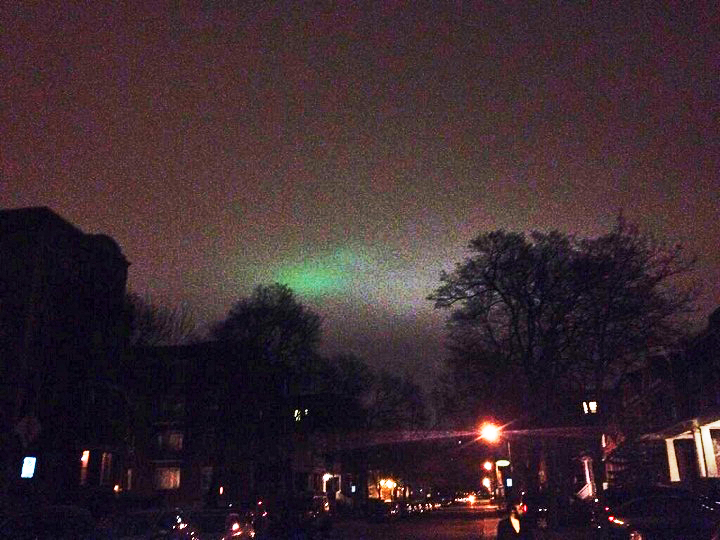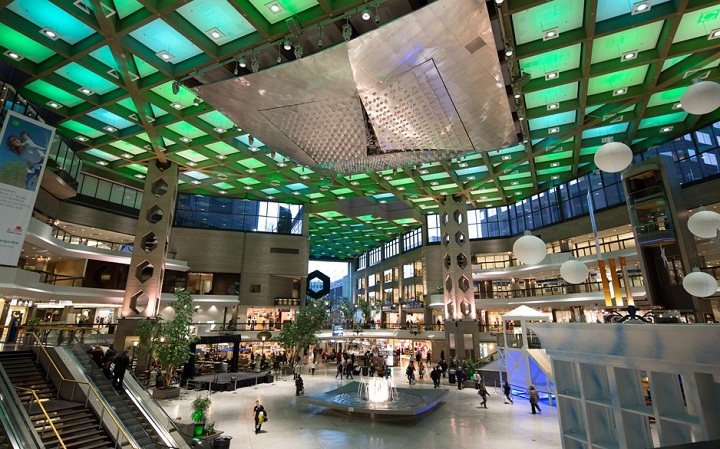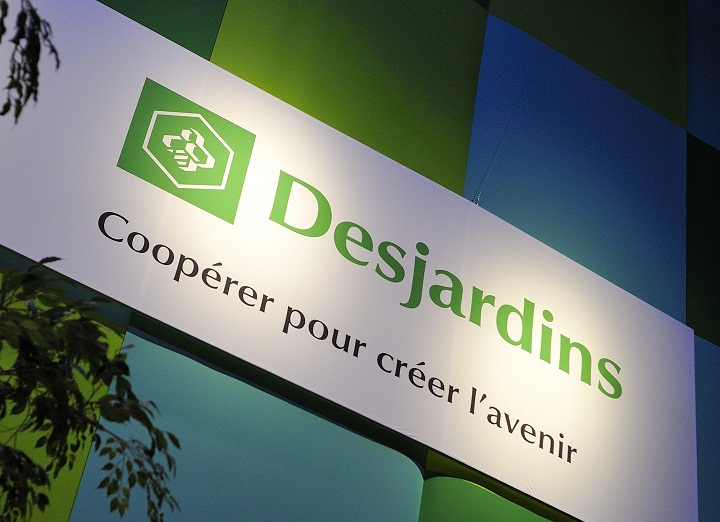MONTREAL – Every once and a while, Montrealers have seen it: a strange green glowing light hovering above the city.

Some took to social media and Reddit to ask what it was and share images:
http://instagram.com/p/ppnZOBTDkJ/
The glow emanates from the Complexe Desjardins in downtown Montreal.

Get daily National news
As France Moreau, a spokesperson for the Complexe explained, it’s a part of a “luminous pathway” designed to shine a light on the Quartier des spectacles.
“The halo can be observed in the sky around the building due to the fact that the building is illuminated from the bottom up to reach out to cover the entire height of the office towers,” she told Global News.
To do this, the company hired lighting design firm Lightemotion to create a eco-friendly, colour-changing, uplit “canopy,” which would be integrated with trees planted in the lobby to create an almost “forest-like” ambiance.
With offices, restaurants and shops all pouring into the 24-metre-high lobby, Complexe Desjardins is simultaneously a public space and a retail environment – and the designer wanted to create a “wow” factor.
“From the end users – the people who work at the complex in retail stores, in the food court, in the offices, who spend eight to ten hours a day of their lives every day in that space – the comments are amazing,” François Roupinian, the founder and chief lighting designer of Lightemotion said in an interview.
“It really sets the tone for where Complexe Desjardins wants to be . . . it brings it to life.”
Until recently, the lobby was downlit by recessed 400-watt intense white “halide” lights that required significant maintenance. With the new lighting, Desjardins not only hoped to create a more inviting space, it wanted to lower the eco-footprint by using LED bulbs.
“This is a very low energy lighting,” said Moreau.
“It was one of our main concerns – because it is entirely LED (light emitting diodes) and because the total consumption of the lighting is hardly 20 Kilowatts, is the approximate equivalent of two stoves.”
If you’re wondering why the colour green, Moreau had a ready answer.
It recalls the brand colours of the owner of the building – the Desjardins Group – whose emerald-tinted logo is well known in Quebec.
“I can see that lighting engineers could think this was clever,” noted Robert Dick, a lecturer at the University of Ottawa who also manages the Canadian Light Pollution Abatement Program for the Royal Astronomical Society of Canada.
“Artificial light at night fundamentally changes the environment.”
“The light that is emitted is a very narrow band, it’s very pure in colour. It’s unusual to see it nature, so it captures attention.”
But branding public spaces, from large billboards along roadways, to advertising on buses, to the air around us, is increasingly being questioned.
“If someone is going to the extent of using light to attract business, they’re in trouble,” Dick noted.
“During the night is when the body repairs itself. It builds up hormones during the late afternoon and then at night it releases them, so humans can rejuvenate.
He explained that when darkness falls, it’s a cue or trigger to release these hormones.
“Twilight is like a changing of the guard.”
If the light doesn’t fade, then we don’t get the full benefit of a nights sleep.
“I approach light pollution as a biological contaminant, like DDT in the water system.”







Comments